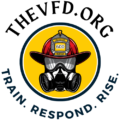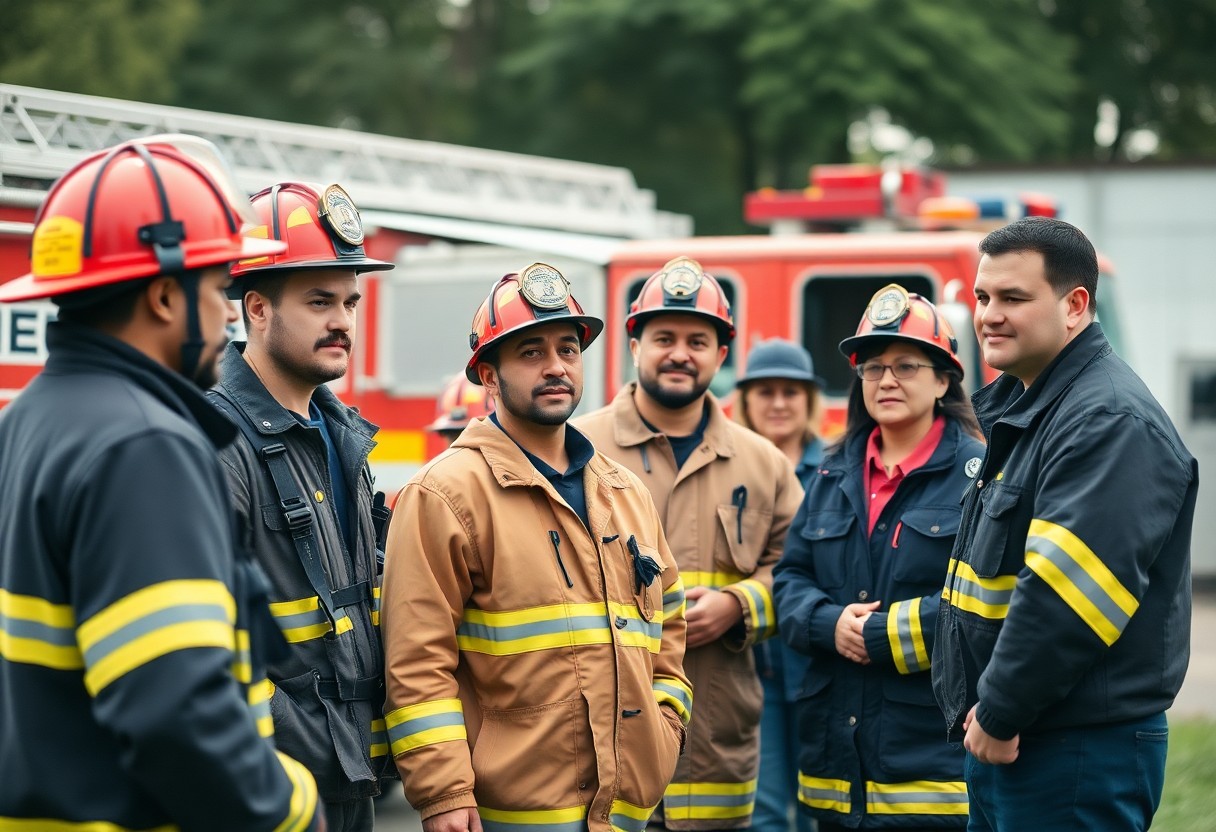Recruiting new firefighters plays a pivotal role in enhancing your local fire department’s effectiveness. In this blog post, you will explore how free classes can serve as an attractive incentive for prospective volunteers and career firefighters alike. By investing in education and training, your department can not only strengthen its workforce but also foster a sense of community involvement. Discover how these free opportunities can empower individuals and reshape the future of fire services in your area.
Understanding the Need for Recruitment
The sustainability and effectiveness of your local fire department heavily depend on continuous recruitment efforts. As the community’s safety champions, you must ensure that your department is staffed with dedicated volunteers and professionals. This allows for a diverse, skilled team ready to respond to emergencies, enhance community resilience, and promote public trust. By prioritizing recruitment, you position your fire department for long-term success, ensuring it can meet evolving community needs.
Current Challenges Facing Local Fire Departments
For many local fire departments, recruitment poses significant challenges such as a decreasing volunteer pool and increasing competition for potential candidates. Changing demographics and shifting societal norms often mean fewer individuals are willing or available to commit to volunteer service. Additionally, you may face obstacles like outdated training programs and limited resources, making it difficult to attract new members while maintaining operational readiness.
The Importance of Community Engagement
After addressing challenges in recruitment, you’ll find community engagement to be a vital strategy for attracting and retaining fire department personnel. Building strong relationships within your community fosters trust and support, which can lead to a greater interest in volunteering. When residents feel connected to your department, they are more likely to consider joining your ranks, participate in training, and support local initiatives aimed at enhancing public safety.
Engagement establishes a two-way street where the fire department not only responds to emergencies but also actively involves residents in safety education and fire prevention programs. By hosting open houses, educational workshops, and community events, you make your department more visible and accessible to the public. This proactive approach not only increases awareness of the role of firefighters but also inspires civic pride and often translates into greater volunteer interest. Ultimately, fostering community engagement serves as a foundation for sustained recruitment efforts and a robust fire department.
The Role of Free Classes in Recruitment
One effective strategy for strengthening your local fire department is offering free classes designed for recruitment. These classes not only educate the community about fire safety but also provide a platform for potential recruits to engage with fire service professionals. By showcasing the skills and knowledge required for the job, these classes help demystify the role of a firefighter and encourage participation in this vital community service.
Types of Classes Offered
The following types of free classes can make a significant impact:
- Basic Fire Fighting Techniques
- CPR and First Aid Training
- Fire Safety Awareness
- Emergency Response Scenarios
- Introduction to Fire Service Careers
Perceiving these classes as avenues for community engagement can effectively attract prospective firefighters.
| Class Type | Description |
| Basic Fire Fighting Techniques | Fundamental skills for handling fires safely. |
| CPR and First Aid Training | Teaches life-saving procedures critical in emergencies. |
| Fire Safety Awareness | Educates on prevention and risks associated with fires. |
| Emergency Response Scenarios | Simulates real-life emergency situations for practical learning. |
| Introduction to Fire Service Careers | Provides insights into the fire service profession. |
Benefits of Free Classes for Fire Department Recruitment
Against the backdrop of declining volunteer numbers, offering free classes helps cultivate interest and awareness within your community. These classes serve as a bridge between the fire department and potential recruits, illustrating the rewarding nature of volunteerism and the skills involved.
Even beyond attracting potential firefighters, free classes foster community relationships and provide invaluable training for residents. This not only enhances public safety but also instills a sense of civic pride, as individuals feel a direct involvement in protecting their community. By investing in these educational experiences, you build a foundation for future recruitment efforts while raising awareness about the importance of fire safety and emergency preparedness.
Success Stories
Now, let’s explore the success stories stemming from free classes offered for recruiting firefighters. Implementing such initiatives has proven effective in invigorating local fire departments, boosting community engagement, and enhancing overall safety. These programs forge a strong community connection while addressing the pressing need for trained personnel.
Case Studies from Various Communities
Among the successful examples are the following case studies demonstrating the impact of free recruitment classes:
- Community A: Increased volunteer firefighter enrollment by 50% in one year after launching free training sessions.
- Community B: Reduced response times by 20% due to a 30% growth in qualified personnel after offering free classes.
- Community C: Enhanced community participation in fire safety programs by 70% following the implementation of free training initiatives.
- Community D: Fostered a diverse recruitment pool with a 40% increase in underrepresented groups joining the fire department.
Measurable Outcomes of Recruitment Initiatives
Across various regions, the outcomes of these recruitment initiatives have been positively measurable. Communities have reported significant increases in firefighter enrollment and response efficiency, leading to a ripple effect of enhanced community safety.
Understanding the tangible benefits reaped from recruitment initiatives allows your local fire department to set benchmarks for success. Expanded enrollment of trained personnel correlates with improved response times and community engagement in fire safety efforts. The reported increases in participation and diversity show that these measures not only fulfill manpower needs but also foster an inclusive environment that reflects the community’s demographic. данных’s data effectively underscores the importance of outreach and accessibility in fire service training.
Developing Effective Free Class Programs
Keep in mind that effective free class programs in your local fire department should focus on community engagement, skill-building, and awareness. These classes can foster trust and rapport with residents while educating them on imperative fire safety practices. By tailoring these programs to meet the specific needs and interests of your community, you’re likely to see an increase in participation and overall support for your fire department.
Strategies for Implementation
Strategies for successful implementation include identifying topics that resonate with your community, scheduling classes at convenient times, and utilizing various promotional channels to reach a wide audience. Engaging volunteer instructors or experts from within your team and beyond can also enhance the quality and appeal of the classes. Ensuring that your programs are accessible and inclusive will encourage a greater community turnout.
Collaborations with Local Organizations
Programs that collaborate with local organizations can significantly enhance the reach and effectiveness of your fire department’s classes. By partnering with schools, community centers, and civic groups, you can leverage existing networks to promote your offerings and harness additional resources. Such partnerships can provide venues and tools, while also tapping into the community’s existing interest in safety and emergency preparedness.
Local organizations often have established trust within the community, making them ideal allies for your fire department. By working together, you can create awareness and drive participation in your programs. Whether it’s co-hosting events or integrating local leaders in your teaching staff, these collaborations can ensure that your free class initiatives are well-received and supported. Engaging local organizations not only enriches the content but also amplifies your outreach efforts, fostering a holistic approach to fire safety education.
Marketing Free Classes to the Community
Once again, reaching out to your community is important for marketing free classes aimed at strengthening your local fire department. By effectively promoting these classes, you not only increase participation but also build a stronger connection with residents. Utilize community boards, local newsletters, and schools to spread the word about these opportunities. It’s important that residents understand the benefits of getting involved, whether for personal development or community safety.
Effective Outreach Strategies
On engaging with your community effectively requires a multi-faceted approach. Begin by identifying key demographics that may have an interest in fire safety or volunteering. Consider partnerships with local organizations, schools, or businesses to distribute flyers or Host informational sessions. Personal invitations can also make a significant impact on attendance, so don’t hesitate to reach out personally to potential participants.
Harnessing Social Media and Local Events
After establishing your outreach framework, leveraging social media and local events can amplify your message. Posting regular updates, engaging content, and testimonials from previous classes can attract participants. Attending community fairs or open houses allows for face-to-face interaction, enabling you to answer questions and create excitement around the offerings.
Strategies using social media and local events can significantly enhance your efforts. Create engaging content that resonates with your community, such as infographics or videos demonstrating what participants can learn. Regular posts on platforms like Facebook, Instagram, or Twitter can keep your classes at the forefront of community discussions. Additionally, set up booths at local events where you can provide information, answer questions, and even conduct mini-sessions, making it easier for residents to visualize their participation.
Evaluating the Impact of Free Classes
All fire departments should assess the effectiveness of free classes in attracting new recruits. Evaluating the impact requires careful analysis of participation rates, skill acquisition, and the long-term retention of volunteers. By establishing a framework for assessment, you can better understand how these classes benefit your community and strengthen your local fire department.
Metrics for Success
One way to gauge the success of free classes is by tracking quantitative metrics such as enrollment numbers, completion rates, and the number of participants who transition into active roles within the department. Additionally, qualitative metrics, like participant satisfaction surveys, can help identify areas where the program is succeeding or where improvements are needed.
Feedback and Continuous Improvement
Feedback from participants plays a significant role in refining your program. Regularly soliciting insights allows you to assess whether your classes meet the needs of prospective recruits and enables you to make data-driven adjustments that enhance the curriculum.
Due to the importance of continuous improvement, it is vital that you take feedback seriously. Use it to create a responsive learning environment that evolves with the expectations of your community. Encouraging dialogue with participants fosters a sense of ownership, empowering you to make necessary adjustments that resonate with your target audience and ultimately strengthen your fire department.
Conclusion
Conclusively, you should consider that free classes can significantly enhance your fire department’s recruitment efforts. By providing these valuable learning opportunities, you attract individuals who are eager to serve their community while also fostering skills important for firefighting. This approach not only boosts your department’s visibility but also strengthens your ties with the local community, ultimately leading to a more robust and prepared firefighting team. Engaging in this initiative can create lasting benefits for both your department and the residents you protect.



